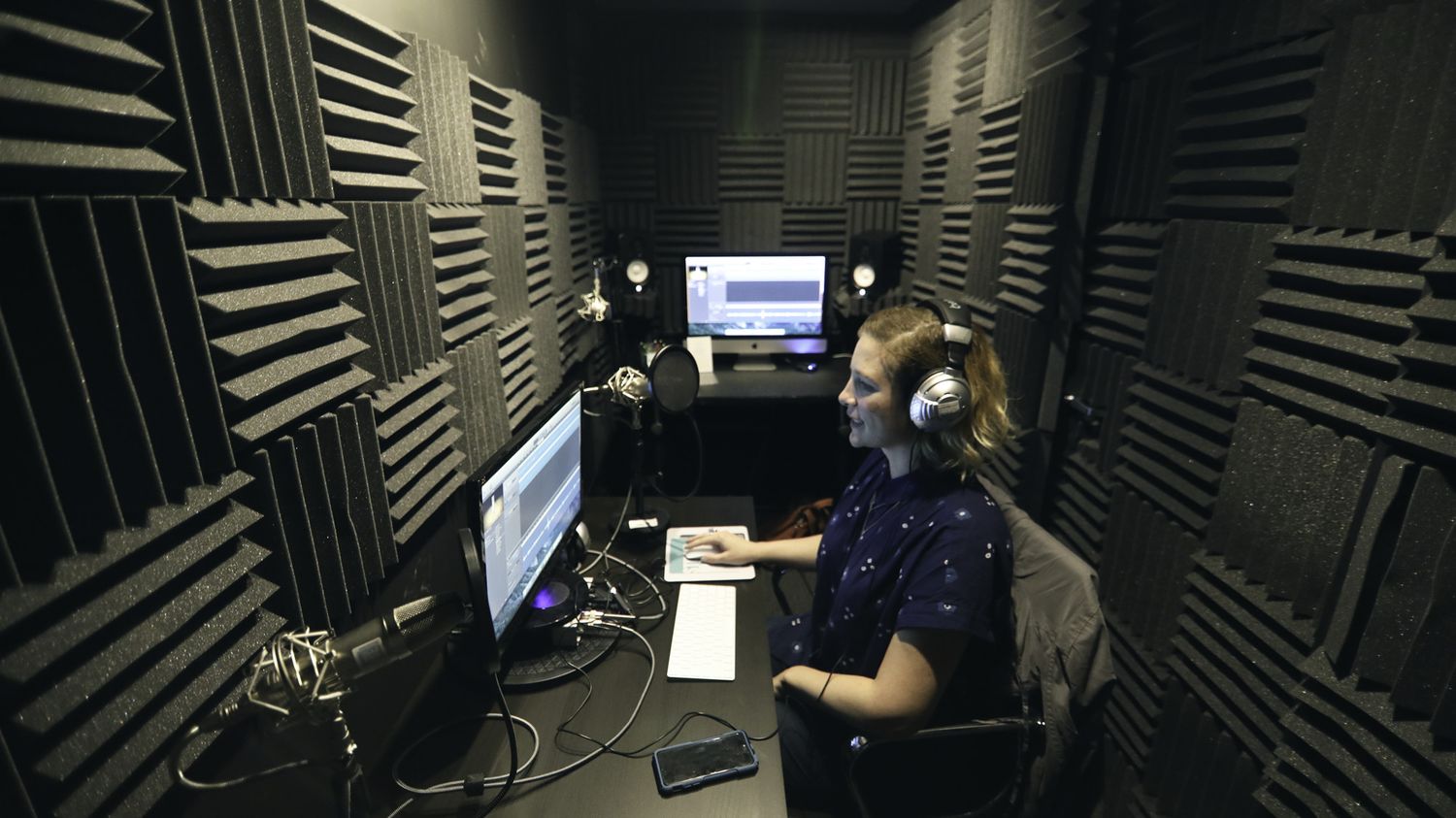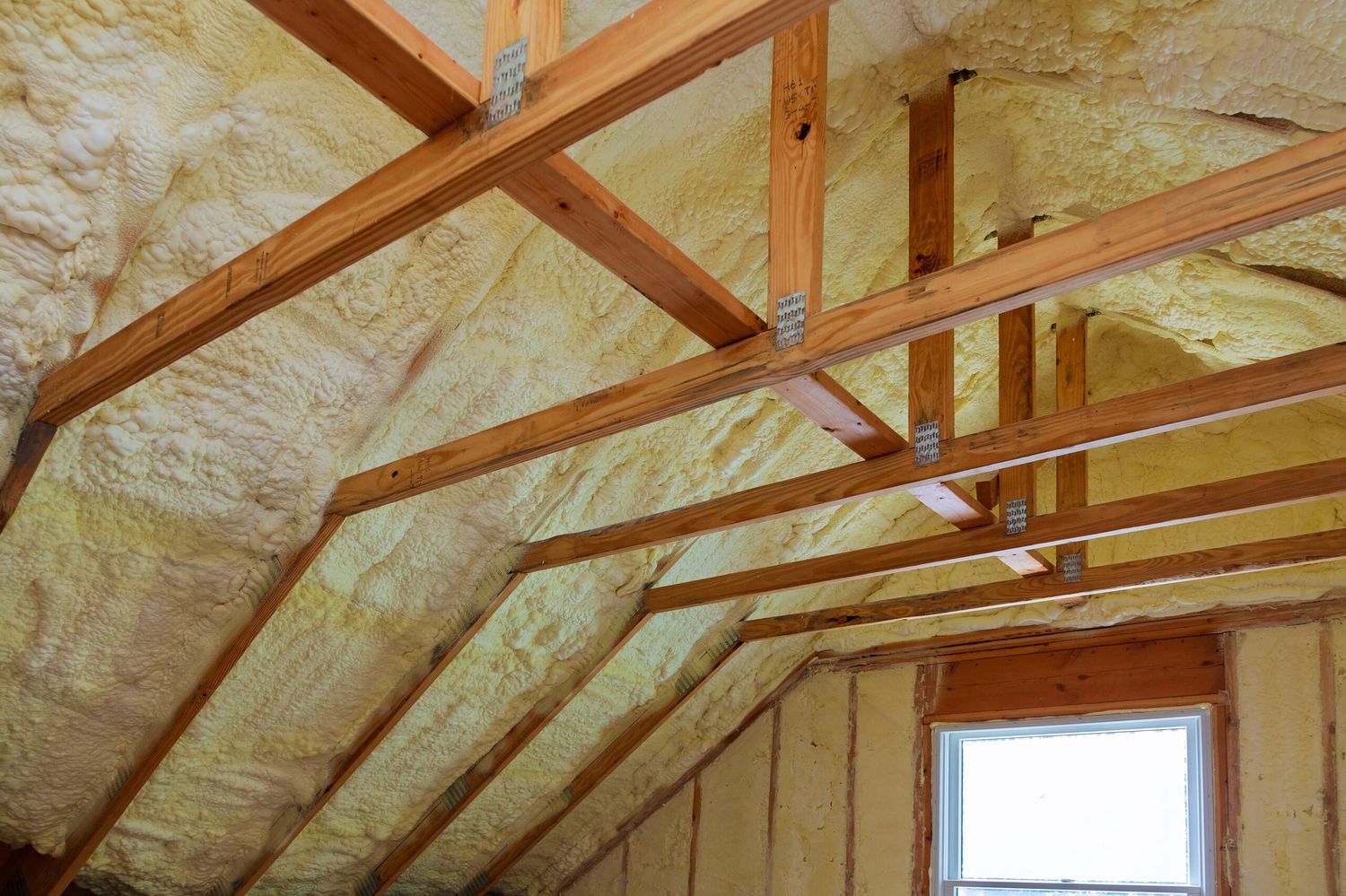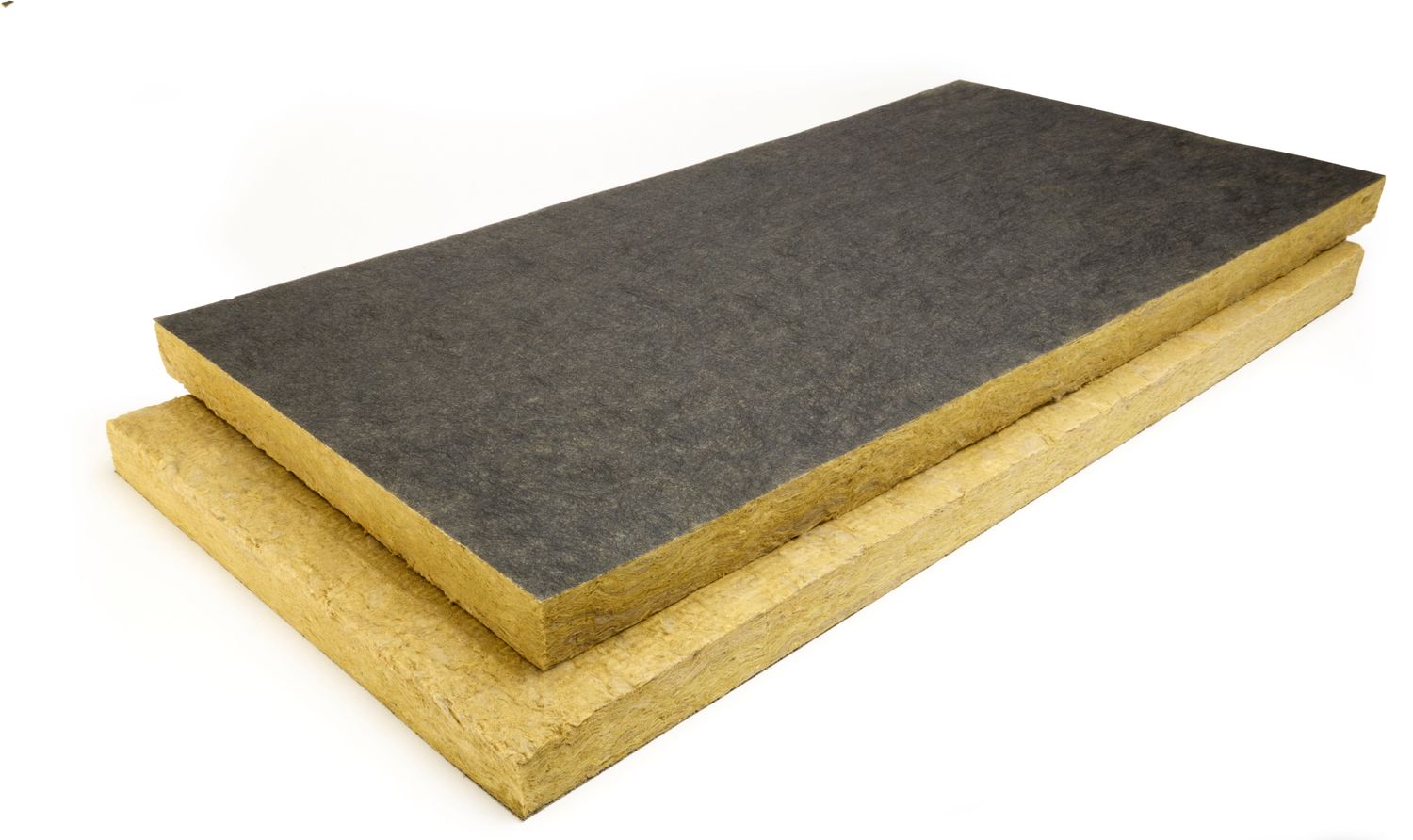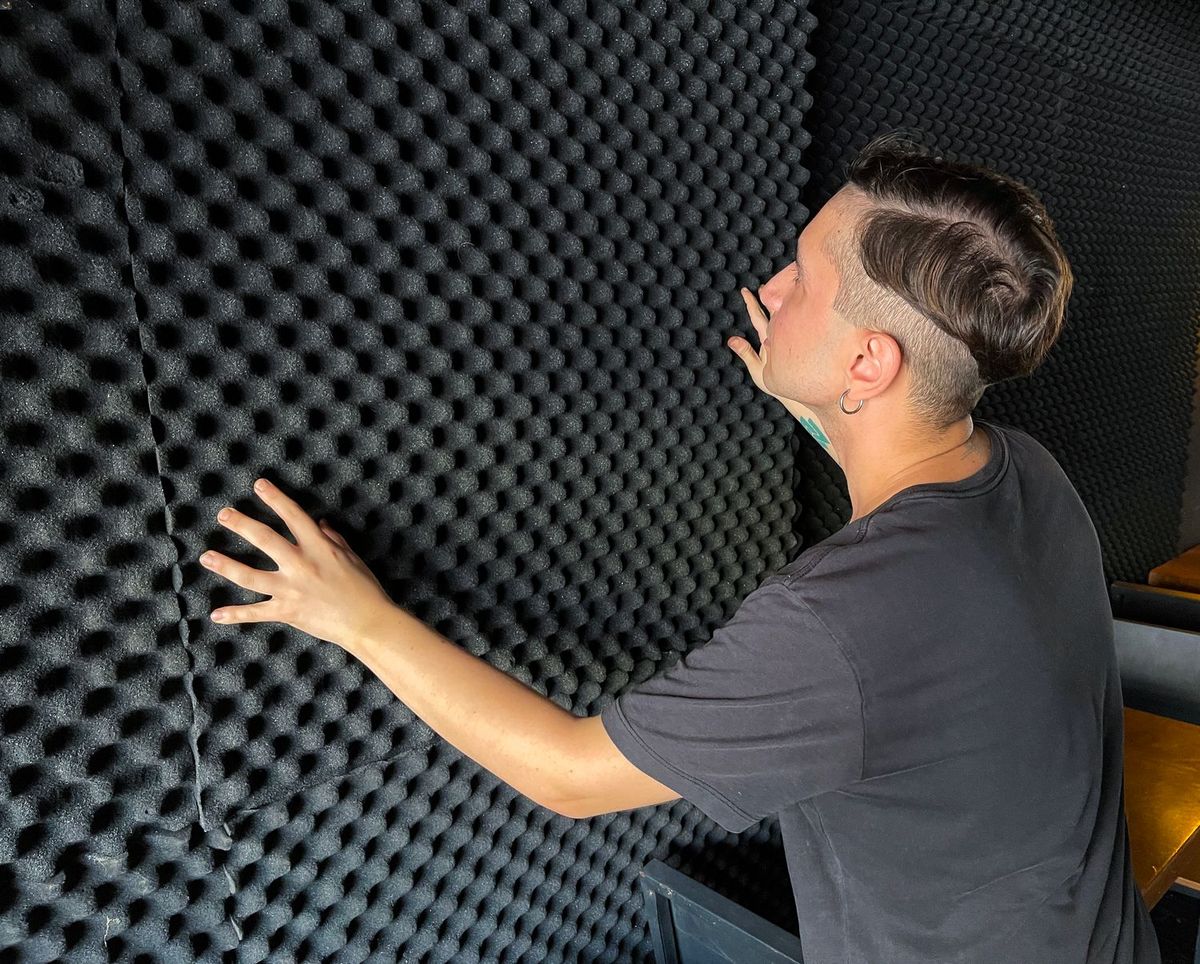Home>Production & Technology>Soundproofing>How Good Is Egg Crate Foam For Soundproofing


Soundproofing
How Good Is Egg Crate Foam For Soundproofing
Published: January 26, 2024
Discover the effectiveness of egg crate foam for soundproofing and find out how it can improve your acoustic insulation. Enhance your space with this affordable and practical solution.
(Many of the links in this article redirect to a specific reviewed product. Your purchase of these products through affiliate links helps to generate commission for AudioLover.com, at no extra cost. Learn more)
Table of Contents
Introduction
Welcome to our comprehensive guide on soundproofing and the use of egg crate foam. If you’re looking for ways to minimize noise in your home or workplace, you’ve come to the right place. In this article, we will explore the use of egg crate foam as a soundproofing material, its properties, advantages, and disadvantages, as well as alternative options.
Noise pollution is a common issue that can disrupt our daily lives. Whether it’s the sounds of traffic, noisy neighbors, or the humming of appliances, unwanted noise can be a serious nuisance. Fortunately, with the right techniques and materials, you can effectively reduce noise levels and create a more peaceful environment.
One such material that is often used for soundproofing is egg crate foam. You may have seen it before in recording studios, music rooms, or even in mattress toppers. But how effective is egg crate foam in soundproofing? And what are its key benefits and drawbacks?
In this article, we will answer these questions and provide you with all the information you need to know about egg crate foam and its role in soundproofing. We will also discuss alternative options that you may consider, depending on your specific needs and preferences.
So, if you’re ready to dive into the world of soundproofing and discover the potential of egg crate foam, let’s get started!
What is Egg Crate Foam?
Egg crate foam, also known as convoluted foam or egg crate mattress topper, is a type of foam material that features a unique design with ridges resembling the shape of an egg carton. It is commonly used in various industries, including bedding, packaging, and most notably, soundproofing.
The foam is typically made from polyurethane, a versatile material known for its cushioning and sound-absorbing properties. The convoluted design of the foam helps to distribute weight evenly and creates air channels, which facilitates better airflow and heat dissipation.
When it comes to soundproofing, egg crate foam is valued for its acoustic properties. The ridges and valleys of the foam serve to disrupt sound waves, causing them to scatter and lose intensity. This helps to reduce the transmission of sound through walls, floors, and ceilings.
It is important to note that egg crate foam is different from acoustic foam, which is specifically engineered for sound absorption and diffusion. While acoustic foam is designed to absorb sound energy, egg crate foam focuses more on sound insulation by blocking and redirecting noise.
One of the reasons why egg crate foam is popular for soundproofing applications is its affordability and availability. It can be easily found in various thicknesses and sizes, making it adaptable to different soundproofing needs. Additionally, egg crate foam is lightweight and easy to install, making it a convenient option for both temporary and permanent soundproofing projects.
Now that we have a better understanding of what egg crate foam is, let’s explore its soundproofing properties in more detail.
Soundproofing Properties of Egg Crate Foam
Egg crate foam offers several soundproofing properties that make it a popular choice among homeowners and professionals alike. Here are some key properties that contribute to its effectiveness in reducing noise:
- Sound Absorption: One of the primary functions of egg crate foam is to absorb sound energy. The convoluted design of the foam helps to disrupt sound waves, causing them to scatter and lose their intensity. This absorption of sound helps to reduce echoes, reverberation, and overall noise levels in a room.
- Noise Dampening: Egg crate foam effectively dampens vibrations that can contribute to noise transmission. When installed on walls, floors, or ceilings, it helps to minimize the transfer of sound waves, preventing them from traveling to adjacent spaces. This makes it an excellent choice for minimizing sound leakage between rooms.
- Reflection Reduction: The uneven surface of the egg crate foam helps to reduce sound reflections. Instead of bouncing off flat surfaces, sound waves get absorbed and diffused by the foam’s ridges and valleys. This reduces the overall buildup of reflected sound, creating a quieter and more acoustically balanced environment.
- Isolation: Egg crate foam creates a barrier that helps to isolate sound sources. Whether it’s loud machinery, music, or voices, the foam can help contain the sound within a specific area, preventing it from spreading and causing disturbances in other parts of the building.
- Easy to Customize: Egg crate foam can be easily cut and shaped to fit specific areas or surfaces. This makes it versatile and adaptable to various soundproofing projects, whether you’re covering an entire wall, placing it under carpets, or using it as a liner for doors or windows.
While egg crate foam provides substantial soundproofing benefits, it is important to note that it has limitations. It is most effective in reducing mid and high-frequency sounds, such as voices, television noise, or general ambient sounds. However, it may not be as effective in blocking low-frequency sounds, such as bass or heavy machinery vibrations.
Now that we’ve explored the soundproofing properties of egg crate foam, let’s move on to the pros and cons of using this material for soundproofing projects.
Pros and Cons of Using Egg Crate Foam for Soundproofing
When considering egg crate foam as a soundproofing material, it’s important to weigh the pros and cons to determine if it’s the right choice for your specific needs. Here are the advantages and disadvantages of using egg crate foam for soundproofing:
Pros:
- Affordability: Egg crate foam is relatively affordable compared to other soundproofing materials, making it a budget-friendly option for many individuals.
- Easy Installation: Installing egg crate foam is a straightforward process. It can be easily cut to size and adhered to surfaces with adhesive or placed between layers of fabric. This makes it a convenient choice for DIY projects.
- Versatility: Egg crate foam comes in various sizes and thicknesses, allowing for customization to fit specific areas or surfaces that require soundproofing. It can be used on walls, ceilings, floors, doors, windows, and even in vehicles.
- Aesthetically Pleasing: The unique convoluted design of egg crate foam not only provides soundproofing benefits but can also add an interesting texture and depth to a room’s decor.
- Effective Sound Absorption: Egg crate foam is highly effective in absorbing mid and high-frequency sounds, reducing echoes and reverberation in a room.
Cons:
- Limited Sound Blocking: While egg crate foam is excellent at absorbing sound, it may not provide significant sound blocking capabilities, especially for low-frequency sounds such as heavy bass or vibrations.
- Durability: Egg crate foam is not the most durable material and may degrade over time, especially in high-traffic areas. Regular maintenance and replacement may be necessary to maintain its soundproofing effectiveness.
- Flammability: Some egg crate foam materials are more flammable than others. If fire safety is a concern, it is important to choose flame-resistant foam or consider alternative soundproofing materials.
- Moisture Absorption: Egg crate foam has a tendency to absorb moisture, which can lead to mold or mildew growth if not adequately protected. Proper sealing or using moisture-resistant foam is necessary in damp environments.
- Limited Low-Frequency Sound Reduction: As mentioned earlier, egg crate foam may not be as effective in reducing low-frequency sounds. Additional soundproofing measures may be required if you are dealing with significant low-frequency noise issues.
While egg crate foam has its advantages and disadvantages, it remains a popular choice for soundproofing projects due to its affordability, ease of installation, and sound absorption properties. However, if the cons outweigh the pros for your specific situation, it’s worth exploring alternative soundproofing options.
Now that we have explored the advantages and disadvantages of using egg crate foam, let’s move on to how to effectively install it for soundproofing purposes.
How to Install Egg Crate Foam for Soundproofing
Installing egg crate foam for soundproofing is a relatively simple process that can be done by following these steps:
- Clean the Surface: Before proceeding with installation, ensure that the surface where the egg crate foam will be applied is clean and free from dust and debris. This will help with proper adhesion and longevity.
- Measure and Cut: Measure the area where you want to install the egg crate foam and mark the dimensions on the foam. Use a sharp utility knife or scissors to carefully cut the foam to the desired size and shape.
- Apply Adhesive: Apply a suitable adhesive to the back of the egg crate foam or directly onto the surface you are soundproofing. Be sure to follow the manufacturer’s instructions for the specific adhesive being used.
- Attach the Foam: Carefully press the foam onto the surface, starting from one corner and working your way towards the opposite corner. Smooth out any wrinkles or air bubbles as you go to ensure proper adhesion.
- Secure the Foam: If desired or necessary, you can use additional methods to secure the foam in place. This can include using double-sided adhesive tape, staples, or even fabric or acoustic panels to cover the foam and provide additional support.
- Repeat as Needed: Repeat the process for each section or area where you want to install egg crate foam for soundproofing. Ensure proper alignment and make necessary adjustments during the installation process.
- Consider Covering: To enhance the aesthetics and protection of the foam, you may consider covering it with a layer of fabric or acoustic paneling. This can also provide added insulation and soundproofing benefits.
Keep in mind that the specific installation process may vary depending on the surface and the adhesive being used. Always refer to the instructions provided by the manufacturer of the foam and adhesive to ensure proper application and adherence.
Remember that while egg crate foam is effective in absorbing sound, it may have limitations when it comes to blocking low-frequency sounds. For optimal soundproofing results, consider combining egg crate foam with other soundproofing techniques and materials.
Now that you know how to install egg crate foam for soundproofing, let’s explore alternative options that you may consider for your soundproofing needs.
Alternatives to Egg Crate Foam for Soundproofing
While egg crate foam is a popular choice for soundproofing due to its affordability and ease of installation, there are alternative materials that you can consider for your soundproofing needs. These alternatives may offer different advantages and disadvantages depending on your specific requirements. Here are some options to explore:
1. Acoustic Panels:
Acoustic panels are specifically designed for sound absorption and diffusion. They are made from materials like fiberglass or mineral wool, with a fabric covering. Acoustic panels are highly effective in reducing echoes and reverberation and can be installed on walls or ceilings in various sizes and shapes. They are generally more expensive than egg crate foam but offer superior soundproofing capabilities.
2. Soundproof Curtains:
Soundproof curtains, also known as soundproofing drapes, are made from dense and heavy materials that have sound-blocking properties. These curtains help to reduce external noise from entering a room and can be used in windows or doorways. They are a convenient option for temporary soundproofing or if you prefer a non-permanent solution.
3. Mass Loaded Vinyl (MLV):
Mass loaded vinyl is a dense and flexible material that can effectively block sound. It is often used as an additional layer in wall construction or as a barrier to reduce noise transmission. MLV is more resistant to moisture and offers better soundproofing for low-frequency sounds compared to egg crate foam.
4. Green Glue:
Green Glue is a viscoelastic compound that is applied between layers of drywall or other building materials. It converts sound energy into heat and provides excellent soundproofing properties. Green Glue is commonly used for soundproofing walls, ceilings, and floors, and can be a more effective solution for blocking both high and low-frequency sounds.
5. Rubber Underlay:
Rubber underlay is a material that is often used for soundproofing floors. It helps to dampen impact noise from footsteps, furniture movement, and other sources. Rubber underlay can be installed under carpet, laminate, or hardwood flooring to reduce noise transmission to the room below.
These alternatives to egg crate foam provide various soundproofing benefits and may be more suitable for specific situations or requirements. It’s important to assess your specific needs, budget, and the level of soundproofing you desire before selecting the most appropriate material.
Now that you’re familiar with alternative soundproofing options, let’s conclude our guide on soundproofing with egg crate foam.
Conclusion
Soundproofing your space is essential for creating a peaceful and quiet environment. Egg crate foam is a popular choice due to its affordability, ease of installation, and sound absorption properties. However, it’s important to weigh its pros and cons and consider alternative options to determine the best soundproofing solution for your specific needs.
Egg crate foam excels in absorbing mid and high-frequency sounds, reducing echoes, and minimizing sound reflections. It is easy to work with and can be customized to fit various areas or surfaces that require soundproofing. However, it may not provide significant sound blocking for low-frequency sounds and may require regular maintenance and replacement due to its durability limitations.
If you’re seeking more comprehensive soundproofing capabilities, alternatives such as acoustic panels, soundproof curtains, mass-loaded vinyl (MLV), Green Glue, or rubber underlay may be more suitable. These options offer superior sound blocking and sound absorption properties, but they may come with a higher price tag or require professional installation.
Ultimately, the best soundproofing solution for you will depend on your budget, the level of soundproofing desired, and the specific needs of your space. It’s important to assess these factors and consider consulting with a soundproofing professional to ensure you choose the most effective solution.
In conclusion, soundproofing with egg crate foam can be a cost-effective and convenient option, especially for reducing mid and high-frequency noise. However, for more comprehensive and effective soundproofing, exploring alternative materials like acoustic panels, soundproof curtains, or MLV may be necessary. Invest in the right soundproofing solution, and enjoy a peaceful and quiet living or working space.











